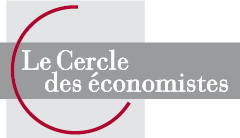The pandemics of 1918 and 2020 compared: An Optimist’s View
By Joel Mokyr, Northwestern University
I teach my students that a good rule of thumb is that every sentence that starts with the words “History teaches us” is highly suspect. Arguing from historical analogy is a tactic of amateurs and demagogues. Yet the Covid-19 pandemic has inevitably brought up historical comparisons with the Spanish flu of 1918. It is a more appealing comparison than, say, the Black Death or the HIV-AIDS epidemics.
First, some statistics to keep things in perspective. In 1918, the demographic news was very bad indeed. The best estimate of world-wide mortality from the Spanish Flu (Johnson and Müller, 2002) put the number at 50 million (which they think maybe an underestimate). The world’s population was approx. 1.8 billion in 1918, so we are looking at an excess mortality rate of 2.8%. Applied to today’s world population, that would amount to an excess mortality of 218 million. The reported global death toll from Covid19 by the end of May 2021 was about 3.5 million. To be sure, by all accounts, that figure is a vast underestimate. The Economist, in March 2021, estimated that the real number is three times higher, c. 10.2 million, with the 5% confidence interval between 7.1 and 12.5 million. That number counts as Covid-deaths even people who died of different causes, but whose treatment was disrupted by the pandemic. All the same, even if we take the Economist’s upper bound, it’s still only about one twentieth of that of 1918. To be sure, these numbers are surely to go up, yet even the most pessimistic forecasts do not predict that Covid-19 mortality will reach levels that are in the ballpark of those of 1918/19.
If anything, the comparison I would like to engage in has an optimistic overtone. From the point of view of the history of clinical science, the 1918 epidemic resembled the Black Death more than it resembled Covid-19. Much like the people hit by the Bubonic Plague of 1348, doctors, scientists, and public health officials in 1918 had no clue as to what hit them. It is astonishing how little best-practice medical knowledge knew about the disease. Most believed that the flu was caused by a bacterium, which was of course wrong [the causal connection with a virus was not discovered till 1935]. Yet thirty years before the advent of antibiotics, physicians were powerless to act against bacteria causing secondary infections either. Instead, medics fell back on the medications they knew: aspirin, which they prescribed in dangerous megadoses, and quinine, which was completely useless as it could only attack the Malaria plasmodium. Many doctors prescribed various toxic substances that did little or no good such as arsenic and mercury. Some doctors even revived the ancient but totally useless practice of bloodletting. As Laura Spinney notes in her book, in many of these cases the best you could hope was a mild placebo effect. More often, the cure was far worse than the disease and almost surely caused deaths to increase. As the famous American witticism has it, it’s not what you don’t know that kills you, it’s what you think you know and ain’t so.
In that regard, our own age has been uniquely fortunate. In the century since the Spanish flu — and until Covid19 came along — infectious diseases have been relegated to a secondary cause of death. Infectious disease mortality in the US declined during the first 8 decades of the 20th century from 797 deaths per 100,000 in 1900 to 36 deaths per 100,000 in 1980. From 1938 to 1952, the decline was particularly rapid, with mortality from infectious disease decreasing 8.2% per year. It looked like humans were definitely winning their war against microbes. To be sure, there were some lethal rear-guard action by microbes and viruses: HIV, Ebola, Swine Flu, multi-drug resistant TB. But demographically these eruptions have been second-order. Then came Covid19. Was this victory, then, illusory?
Covid, being viral and in many ways especially vicious, was something of a surprise to almost anyone not named Bill Gates. Yet Covid has served as something we call in the economic history of technological change “a focusing device”. From the start, it was widely recognized by the scientific and industrial communities as a major threat, and they concentrated their intellectual firepower to identify and combat it. Almost as soon as it
appeared, Chinese molecular biologists sequenced its genome, sent it to anyone for the asking, and a huge global effort toward developing a vaccine was launched, It was a wonderful example of best-practice modern science at work, and of international cooperation between citizens of the Republic of Science.
However, none of that would have succeeded without another major scientific breakthrough. Since the mid-1990s, a group of scientists led by Katalin Kariko have been working on m-RNA vaccination, a revolutionary idea in medicine. Basically, m-RNA vaccination is a way of telling cells to make what looks like a piece of virus, so the body produces antibodies and special immune system cells in response. The instructions disappear while the body’s immune response lasts. It is a general form of immunity, so that it works just as well against different variants of the virus. Moreover, in order to make it, you just need a gene sequence of the virus, you not even need a sample of the virus itself. Kariko and her team started the process of making RNA the day after receiving the sequence from Wuhan. A couple weeks later, they were injecting animals with the vaccine.
The enormous amount of research-time and money that went into m-RNA development in the past year has a huge potential for spillover effects. It has become the fashionable and popular topic of research, thanks to the focus on it driven by the pandemic. The oligonucleotide therapeutics society is the hottest organization in the pharmaceutics world. As noted, mRNA’s big promise is that it can tell our cells to make whatever protein we want. That includes the antigens of many other diseases besides Covid-19. For that reason it turns out that the vaccine potential of this technique is huge: it seems that it may be feasible to provide immunity against a wide range of influenza viruses, as well as against Ebola, Zika, Rabies and Cytomegalovirus (a serious infection of newborns). This year, a team at Yale patented a similar RNA-based technology to vaccinate against malaria, perhaps the world’s most devastating and costliest disease. Equally thrilling: they are working toward finding one holy grail of vaccination, HIV-Aids. Applications to cancers, the other holy grail, are not far behind: vaccines against melanoma and brain tumors are in the works. The logic of mRNA
may also be applied to suppress excessive immune responses, and to make progress in one of humanity most tenacious scourges: autoimmune disease.
In short, the war against Covid may become the mother of all spillover effects. It is almost insensitive to say this, but from this angle the Covid-19 pandemic may turn out a blessing in disguise. Until 2020, progress in mRNA vaccination had been slow. Many in the scientific community had been skeptical of its capabilities to trigger specific immunity, and Professor Kariko’s academic struggles at the University of Pennsylvania have become the stuff of legends. The pandemic has provided mRNA with a definitive proof of concept, and opened the eyes of the medical profession to the potential of mRNA vaccines. Nothing convinces a scientific community of the validity of a concept better than that it leads to a product that demonstrably works. It also lubricates the administrative machinery: investors in this sector normally had to wait for more than a decade, first for the clinical trials, then for regulatory approvals. Covid-19 turbo-charged all these processes for anything related to mRNA.
We need to think about the significance of all this. Covid19 was a catastrophe. Its economic effects have been devastating. It will take the economies of the West some time to adjust and the developing world much longer. There will be persistence effect, and they won’t be pretty: orphans, people with long term lingering after-effects (known as “long- Covid”). Millions of people had their lives, education, and careers disrupted. But in terms of economics, don’t underestimate the adaptability and resilience of capitalist market economies. In this sense it may be similar to the 1918 Spanish flu, which was followed by the economic boom and rapid growth of the “roaring twenties” in which the lingering costs of the Spanish flu pandemic were not so much forgotten as swept under rug on which the survivors were dancing.
From a medical point of view, however, there will be what is known as a “ratchet effect” — medical knowledge will move to a higher plateau, armed with a new and powerful
tool to manipulate our immune systems. Much of the history of technological progress consists of unanticipated and unintended consequences of clever ideas. But when inventions are founded on a serious epistemic base in formal science (whether experimental or theoretical), what we observe is a positive feedback loop between those who know things and those who make things. Such feedback loops have saved us from Covid19 becoming as devastating as the 1918 Spanish flu.
Two final reflections. First, economic history is often described as having a “hockey- stick” shape: for many centuries income is rather stationary, followed by a sudden and sharp upturn. If this is true for GDP, it is even more so for medical knowledge. As late as 1850, best-practice medical knowledge had no real idea about what caused disease and what made our bodies function and malfunction. What we have learned since is nothing short of astounding. If we extrapolate on this trend, it seems that eradicating viral and parasitical infections altogether and adding another 40 years to life expectancy is not fanciful.
Second, human history can be presented as a never-ending contest between human knowledge and the Darwinian evolution of pathogens. Mutations and selection mechanisms keep throwing new diseases at us, from the Justinian Plague and the Black Death to Smallpox, Ebola, HIV, and Covid19. When humans find an answer to one disease, evolution tries to undo our successes by producing mutants that defend the pathogens against our weapons. Sometimes our triumph is final as in smallpox or polio; in others, it is partial and ephemeral, as in influenza and HIV. But in this race between evolution and ingenuity, bet on ingenuity.
Thank you












